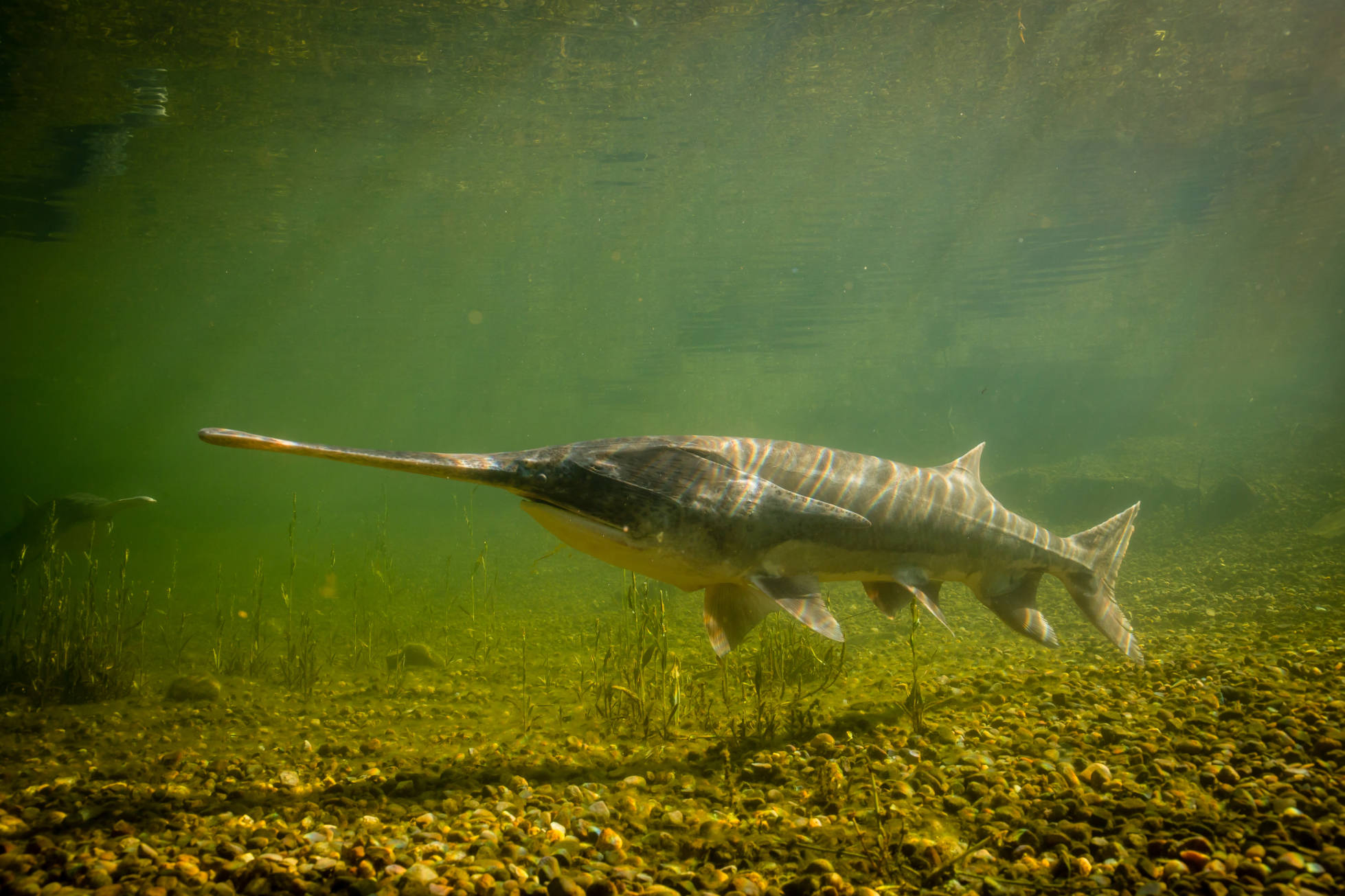Tishomingo National Fish Hatchery, located ten miles north of its namesake town, has completed its annual spring spawning of paddlefish. The hatchery has spawned, raised, and released paddlefish since 1992, returning what is arguably the oddest-looking creature in Oklahoma back to its native waters.
The federal fisheries facility took on paddlefish production 25 years ago in the face of declining paddlefish populations across the fish’s native range. The paddlefish naturally occurs in the large rivers feeding the Mississippi River basin from Montana to Louisiana. It’s a wide-ranging, animal, too. Tagged fish have been shown to move hundreds of miles, particularly in the springtime when they ready themselves to spawn. As daylight increases, water temperature warms, and river flows ramp up, paddlefish are cued by nature to move to their spawning habitat—gravel bars on shallow riffles.
And therein lies a conservation problem: they run headlong into dams and, in many cases, cannot get past them to spawn. Females absorb their eggs and fail to spawn. Over time, paddlefish populations above dams were depleted, and that’s where the hatchery stepped in.
Staff from the national fish hatchery and Oklahoma Department of Wildlife Conservation converged recently at Grand Lake of the Cherokees near Miami to catch adult paddlefish.
“It’s heavy work,” said hatchery manager Kerry Graves. “We have to catch and transport fifty-pound fish back to Tishomingo to spawn them in captivity. We spawned a total of eight females, with eleven male fish contributing.”
It is a laborious affair. The wild paddlefish are acclimated to captivity, then anesthetized and have their eggs surgically removed, and then fertilized. The sutured females then recover at the hatchery and are returned to their home waters. A 50-pound female yields approximately 150,000 eggs. Eggs from six females may yield 50,000 young paddlefish by the time they are ready to be released in the wild in July.
Though that percentage of survival may seem low, it is far in excess of the survival rates paddlefish face in the wild. Mortality of small paddlefish in their first year from predators—herons, kingfishers, bluegills, black bass, and stripers—and diseases is naturally high.
Most of this year’s paddlefish spawn will be planted in Lake Eufaula, now in its tenth year of receiving paddlefish. Two thousand will go back into Grand Lake of the Cherokees, and 5,000 paddlefish will go into Lake Redmond in Kansas. Another small set of fish will be stocked into an oxbow near Caddo Lake in Texas over the summer.
“Paddlefish are an amazing animal and part of Oklahoma’s natural heritage,” said Graves. “The fry look like clumsy tadpoles; bigger fish are odd-shaped, fast-growing, and boneless except for their jaw. They reach enormous size eating microscopic plankton—and their nearest relative swims in China half a world away.”
Paddlefish spawned at Tishomingo this spring will reach a foot long by July. Should a paddlefish grow to its full potential and its natural long life, it could reach 150 pounds and seven feet long at 30 years of age.
Tishomingo National Fish Hatchery opened in 1929 and is one of 70 such facilities located around the country. The hatchery is situated in an area of conservation emphasis for the U.S. Fish and Wildlife Service’s Southwest Region. For more information, visit fws.gov/southwest.
Craig Springer, U.S. Fish and Wildlife Service—Southwest Region, External Affairs, Albuquerque, New Mexico.

